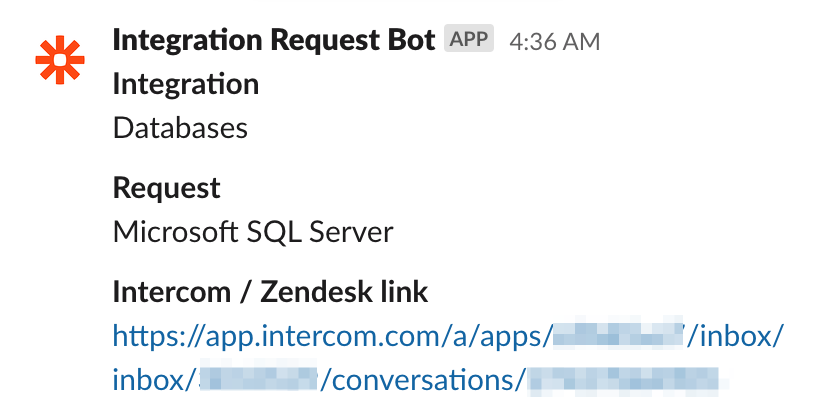Slack has been highly popular in professional circles since it was founded in 2009, so much so that the communication app has become a verb. In the past few years it’s become ubiquitous, especially in recent times with the various lockdowns and teams going remote.
If Slack’s where important conversations happen, and where your team now hangs out, it also makes sense that it’s where you share your data.
Manually copying and pasting screenshots of charts, links to reports, or attaching spreadsheets, is fine when it’s a one-off. But if your goal is to ensure your important KPIs are being seen daily then manual methods quickly break down.
So how do you automatically get your latest KPIs into Slack (without resorting to code and dealing with APIs)?
Getting your data into Slack
Option 1 - automation apps such as IFTTT, Zapier, Automate.io, and Tray.io
Using any of these tools to get data into Slack is relatively straightforward, and could be inexpensive depending on what data integration you need. However, some of the integrations are limited and in most cases only text-based outputs are available so no charts, but you can still set things up.
Updates through these methods are normally fired conditionally rather than at a fixed schedule. For example, you could automatically post any new files uploaded to a specific Google Drive folder onto a Slack channel of your choice.
Zapier
Serving like a universal adaptor, Zapier is a handy tool that allows you to automate tasks between two services.
With Zapier you can send data from multiple data sources onto Slack via individual Zaps.
A Zap we find particularly useful is the one that sends to Slack a new message whenever a new record is added on Airtable. This is because we use Airtable to log integration requests, and connecting it to Slack helps improve visibility and triggers conversations when a request isn’t entirely clear or someone knows a workaround to get data from that source, etc.

In the same way, reports or updated metrics could be shared. You just have to make sure the trigger/Zap gets the data that you need and pushes it to the right Slack channel.
Option 2 - Email App
With Slack, it’s possible to have your most important emails automatically feed through to a channel. This can be helpful as emails tend to get missed in people's inboxes, so by feeding them into Slack you can ensure they get seen and discussed.
Email App
On Slack’s paid plans, you can create an email address that automatically posts any new email directly into a specific channel.
- Add the email app from the Slack App Directory.
- Then pick a channel you want to direct your emails into.
- Copy and use the generated email address. This is particularly useful for sending reports into Slack.
- Any email directed to the special address will appear in your desired channel immediately.
If you’re already getting a summary email from a product you use, this is certainly a great option. For example, we use SEMrush which sends daily summaries of our SEO performance. We share these in Slack to ensure all stakeholders see it, and discuss it then and there.
The downside is that PDFs aren’t automatically rendered so you still need to unfurl the message and click on its link to get the report.
Option 3 - Geckoboard
With Geckoboard you can transform your key metrics into a dashboard and schedule screenshots directly into Slack channels of your choice (either public or private).
Your dashboard will load as an image that’s fully rendered and nicely formatted, so people can instantly see it – without having to leave Slack.
This ensures your most important data is easy for everyone to understand at a glance. You can also surface real-time performance metrics, and bring your KPIs together so they’re front of everyone’s mind.
Simply connect Geckoboard’s Slack app to your Slack workspace, select a channel and a time, and voila!
Geckoboard Snapshot for Slack

